 Creativity Paper Creativity Paper |
 
|
Creative Company and Methods |
| Makoto Takahashi (SOKEN Research Institute and Japan Graduate School of Professional Education)
|
Special Invited Talk presented at 4th Global TRIZ Conference in Korea (GTC2013), Held on July 9-10, 2013 at Seoul Trade Exhibition& Convention, Seoul, Korea |
| Posted: Nov. 17, 2013 under the permission of GTC2013; Updated: Nov. 18, 2013 |
For going back to Japanese pages, press  buttons.
buttons.
 Editor's Note (Toru Nakagawa, Nov. 14, 2013)
Editor's Note (Toru Nakagawa, Nov. 14, 2013)
This page is a record of Dr. Makoto Takahashi's Special Invited Lecture presented last July at the Global TRIZ Conference (GTC2013) in Korea. My participation report of the conference is already posted in a separate page (in Japanese)  . Dr. Takahashi prepared his talk beforehand but extended it further on the night before by including movies etc., he said. Using the slides in English, he talked in Japanese by the assistance of simultaneous interpretation into English.
. Dr. Takahashi prepared his talk beforehand but extended it further on the night before by including movies etc., he said. Using the slides in English, he talked in Japanese by the assistance of simultaneous interpretation into English.
In my participation report, I introduced Dr. Takahashi's presentation as follows:
Dr. Makoto Takahashi has been one of the top leaders of the creativity movements in Japan since 1960s. While he was an undergraduate student, he became the Chairman of 'Japan Creativity Association' (Nihon Dokusousei Kyoukai). In 1974 he started a creativity consulting firm 'SOKEN Research Institute' and is its Chairman; he has been guiding a large number of companies and municipal offices, etc. He has been working for international cooperation with creativity researchers in USA, Europe, and Asia. He has visited Korea about 20 times so far, he says. He is ex-President and ex-Chairman of the Japan Creativity Society (JCS), and is also Special-appointment Professor of Japan Graduate School of Professional Education. He has authored or edited about 70 books, including "The Bible of Creativity" (in Japanese) published by JSCD in 2002.
He talked in the present invited lecture about the history and thoughts of his and Japanese creativity movements by using a variety of real cases. In the case of the reforming of Asahiyama Zoo in Asahikawa city, Hokkaido, a big success was achieved by constructing a concept of 'Making it possible to see the characteristic natural behaviors of (rather familiar) wild animals closely and naturally'. He also performed a lot of work in designing Corporate Identities, in planning events, in giving names, etc.
I realized that Japanese TRIZ promoters and users, including myself, should extend the communications and collaborations further with various people and movements in the field of creativity techniques, practices, and education in Japan.
The audience at the conference were mostly people in Korea and some from other foreign countries. But I myself was certainly the person who best understood the contents and significance of the talk. I wanted to make the record of Dr. Takahashi's talk readable both by people in Japan and in the world. I am very happy to post the record here, after overcoming a delay due to some email troubles.
The presentation slides are in English. Some newspaper/magazine articles in small fonts can be read (in Japanese) in the original PDF file  . In the present HTML page, images of the slides are arranged under the section titles, which I made for your easier undestanding. Due to the lack of movies and narrations, you may feel it not easy to understand the lecture, I am afraid. We wish to have some other occasions of reading/listening Dr. Takahashi's presentation again in future.
. In the present HTML page, images of the slides are arranged under the section titles, which I made for your easier undestanding. Due to the lack of movies and narrations, you may feel it not easy to understand the lecture, I am afraid. We wish to have some other occasions of reading/listening Dr. Takahashi's presentation again in future.
In another Editor's Note at the end of the present page, I am discussing on the overview of creativity methods.
Table of Contents:
1. Introduction
1-1 Selfintroduction -- Makoto Takahashi
1-2 My work experiences and publications
1-3 My activities and writings so far
1-4 My hobby: Sheep goods collection
2. Creative Company
2-1 Necessary ability for a company leader
2-2 Study of real cases of creation (1) Asahiyama Zoo
2-3 Study of real cases of creation (2) Low cost carrier
2-4 The Declaration of the Principles of Creation
Principle of Creation, Principle of Co-operation, Principle of developing creativity / creative human resources
2-5 Three Levels of Approaches to Creative Management
2-6 Study of real cases of creation (3) 'My French' Restaurant
2-7 My suggestions for TRIZ
3. Creativity Methods
3-1 My Suggestions for TRIZ: Use the methods for creativity more actively
3-2 Overview of Creativity Techniques
3-3 Divergent Thinking Techniques: Free Association Techniques
3-4 Divergent Thinking Method: Analogical Thinking Techniques
3-5 Convergent Thinking Techniques: Grouping Technique
3-6 Convergent Thinking Techniques: Idea Evalution Method
3-7 Creative Thinking Support Systems
4. Concluding: My Dream
 Presentation Slides PDF
Presentation Slides PDF  (60 slides, 4.3 MB)
(60 slides, 4.3 MB)
Creative Company and Methods
Makoto Takahashi
(Chairman of SOKEN Research Institute and
Special-appointment Professor
of Japan Graduate School of Professional Education)
Special Invited Talk,
Presented at 4th Global TRIZ Conference in Korea (GTC2013),
Held on July 9-10, 2013 at Seoul Trade Exhibition& Convention, Seoul, Korea
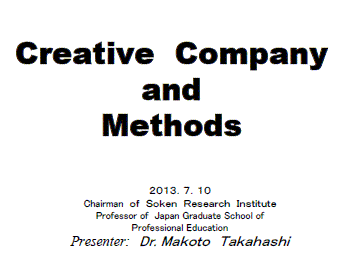
1. Introduction
1-1 Selfintroduction -- Makoto Takahashi
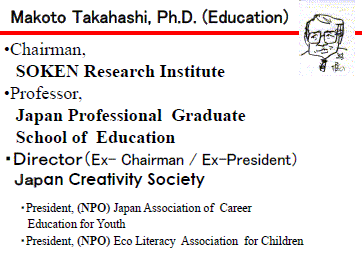
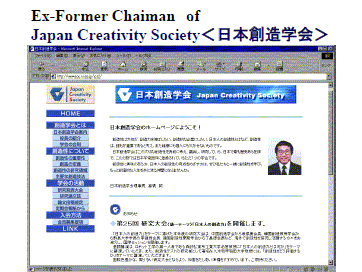
1-2 My work experiences and publications
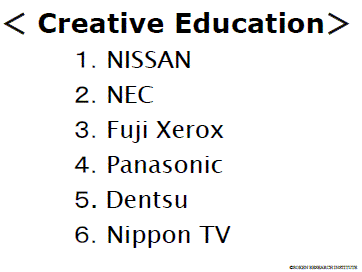
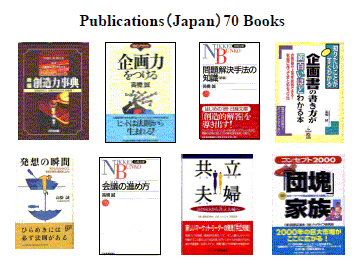
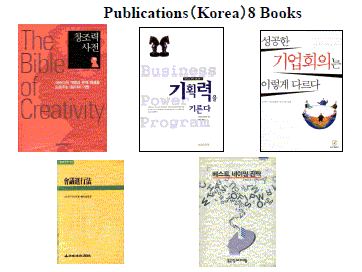
1-3 My activities and writings so far
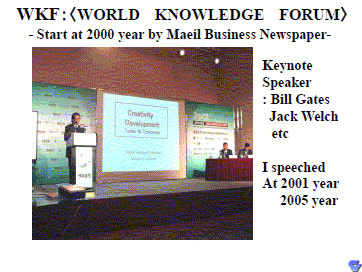
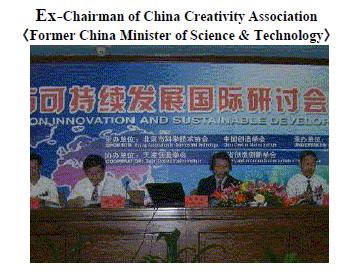
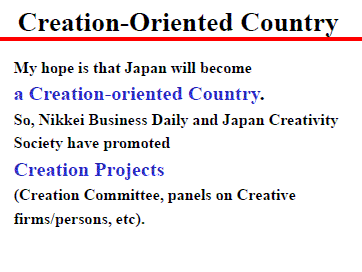
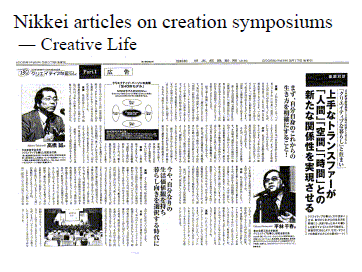
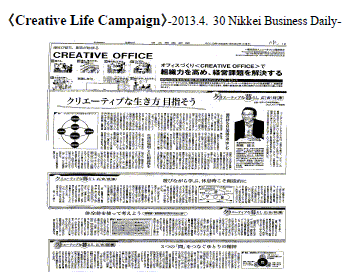
1-4 My hobby: Sheep goods collection

2. Creative Company
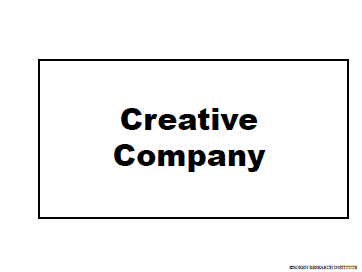
2-1 Necessary ability for a company leader
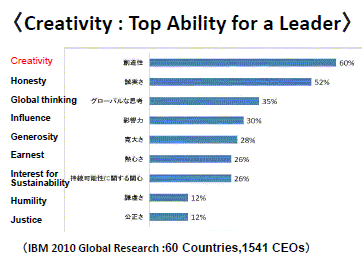
2-2 Study of real cases of creation (1) Asahiyama Zoo
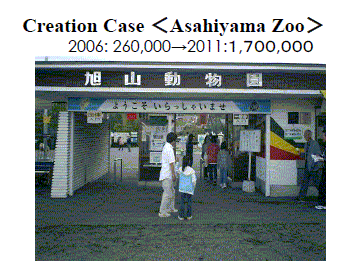
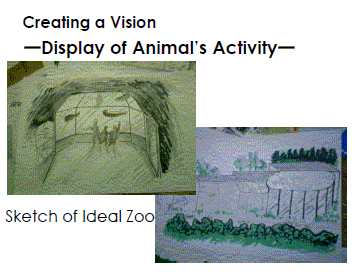
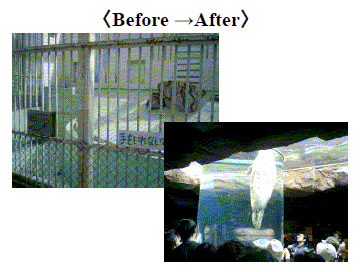
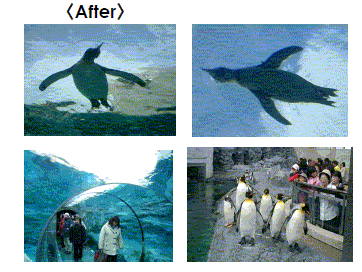
2-3 Study of real cases of creation(2) Low cost carrier
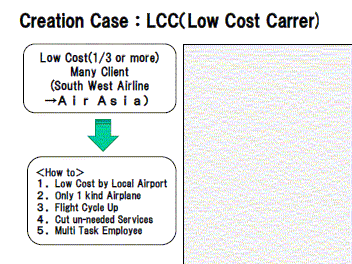
2-4 The Declaration of the Principles of Creation
(Takahashi served as the coordinator of the Committee organized by The Nikkei Business Daily)
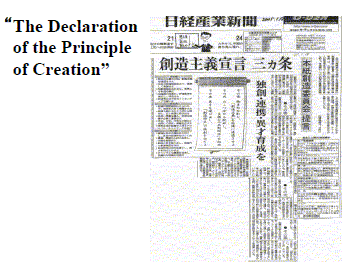
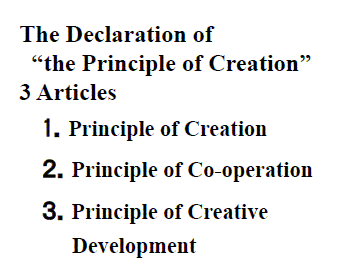
2-4-1 Principle of Creation
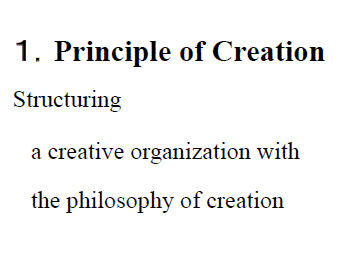
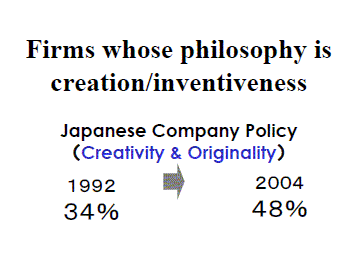
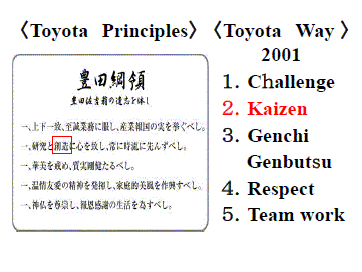
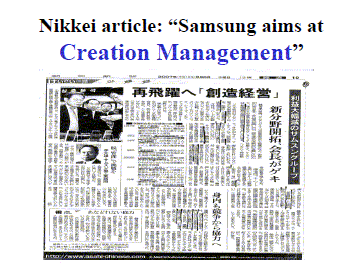
2-4-2 Principle of Co-operation
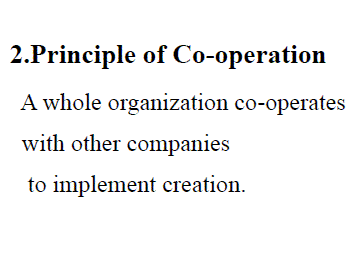
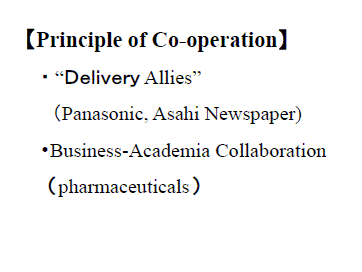
2-4-3 Principle of developing creativity / creative human resources
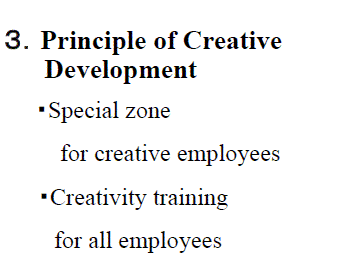
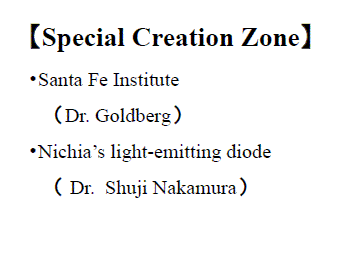
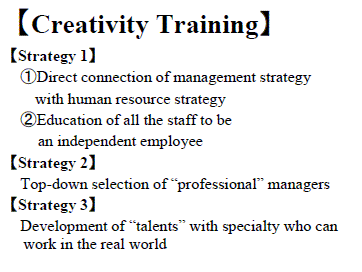
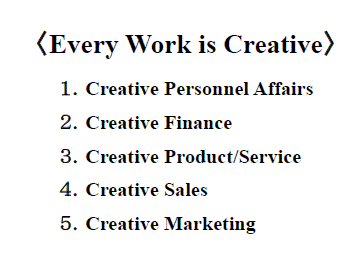
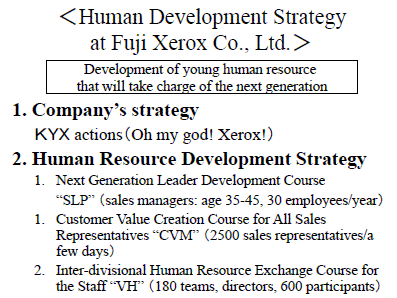
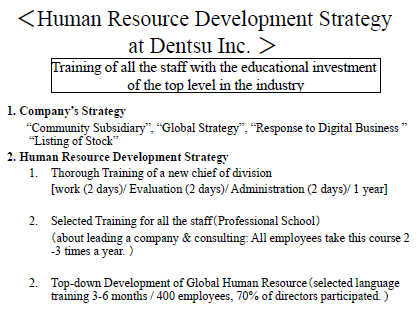
2-5 Three Levels of Approaches to Creative Management
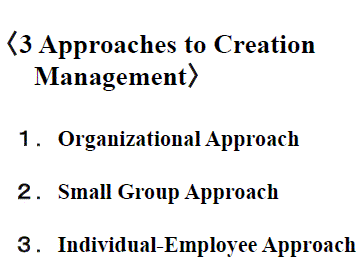
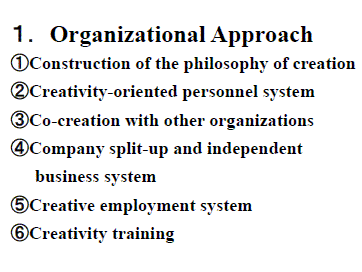
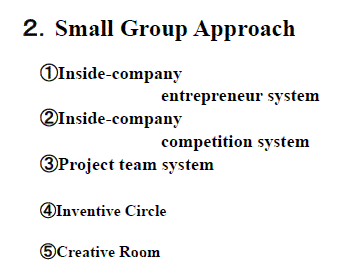
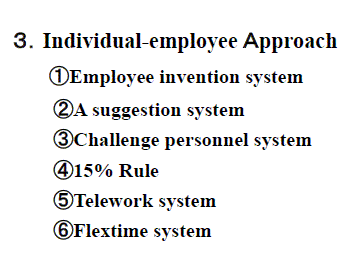
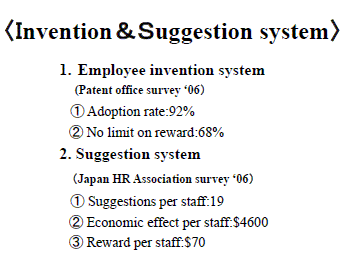
2-6 Study of real cases of creation (3) 'My French' Restaurant
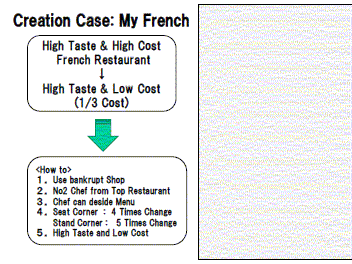
2-7 My suggestions for TRIZ
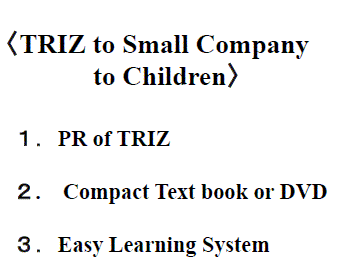
3. Creativity Methods
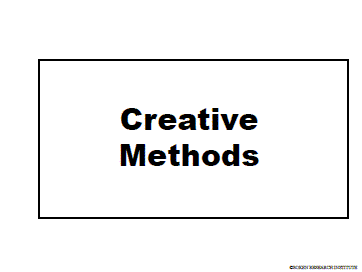
3-1 My Suggestions for TRIZ: Use the methods for creativity more actively
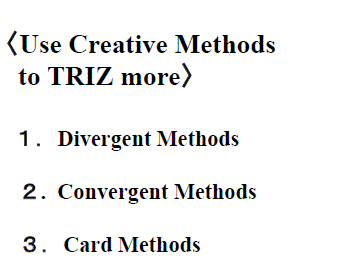
3-2 Overview of Creativity Techniques
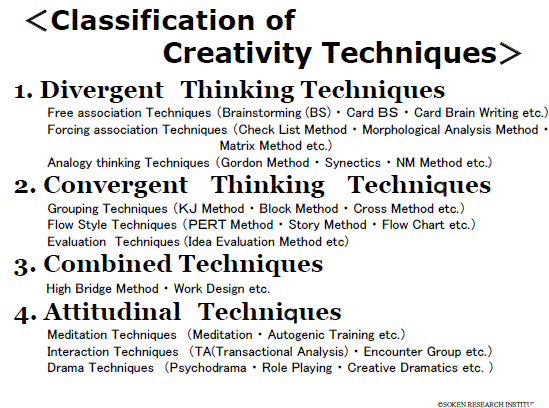
3-3 Divergent Thinking Techniques: Free Association Techniques
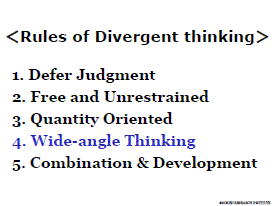
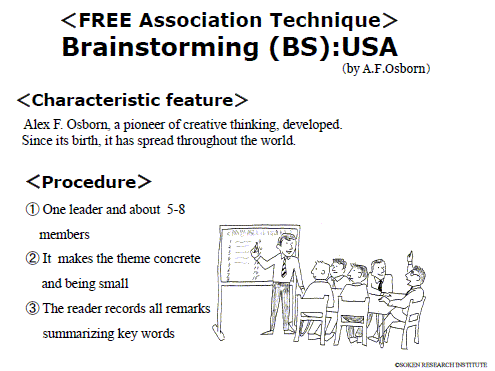
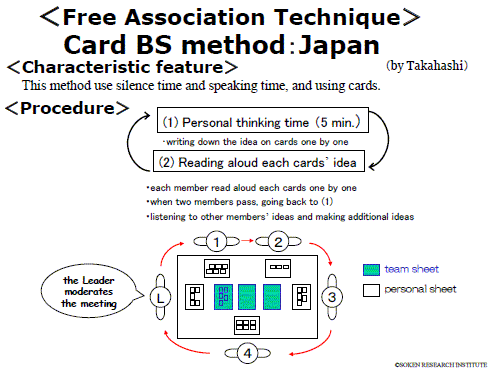
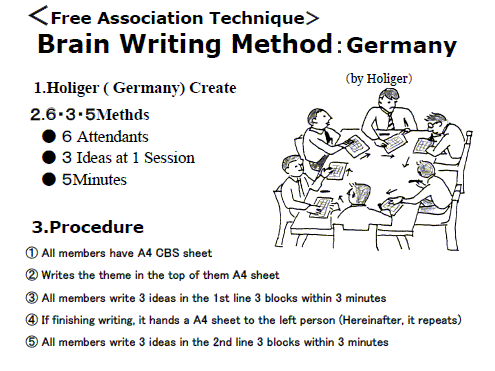
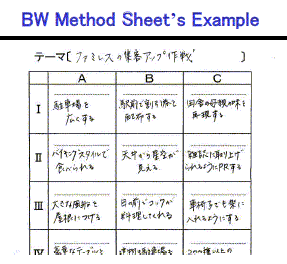
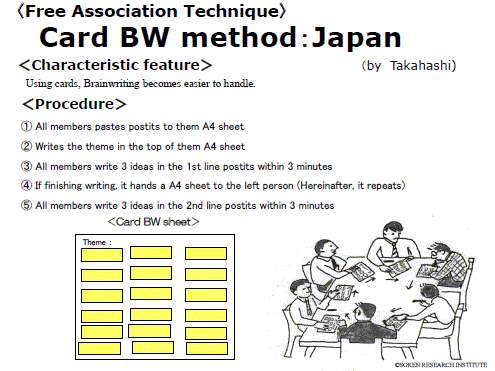
3-4 Divergent Thinking Method: Analogical Thinking Techniques
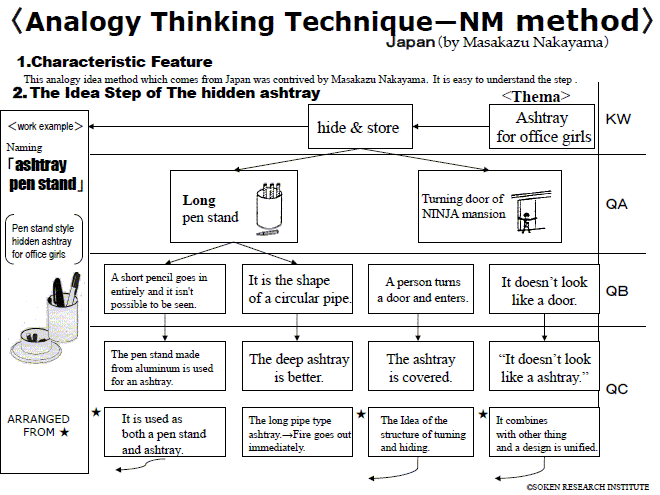
3-5 Convergent Thinking Techniques: Grouping Technique
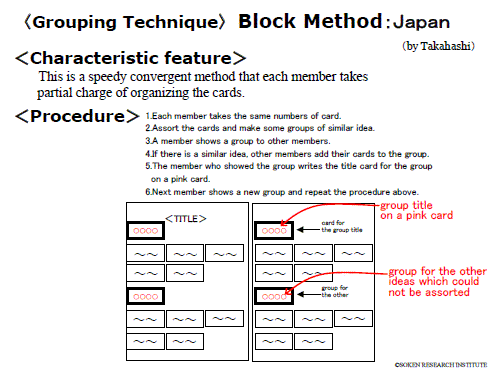
3-6 Convergent Thinking Techniques: Idea Evalution Method
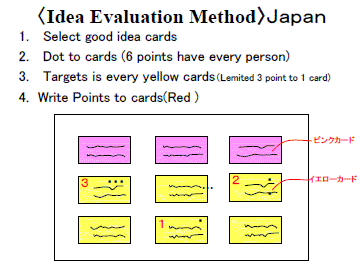
3-7 Creative Thinking Support Systems
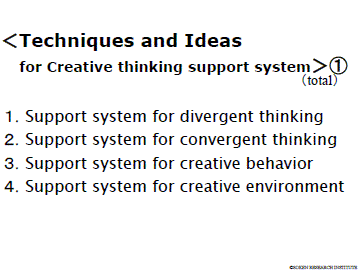
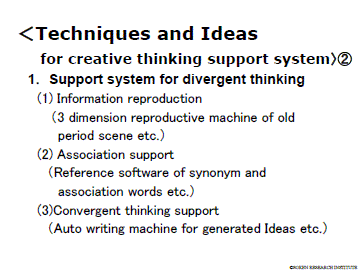
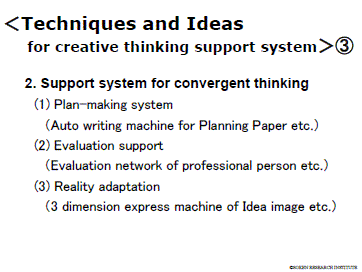
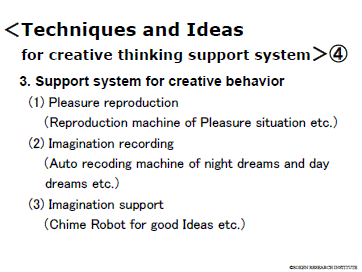
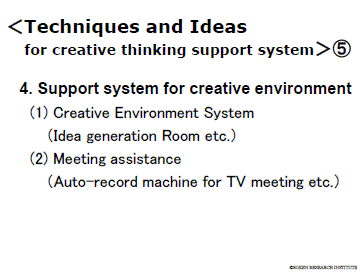
4. Concluding: My Dream
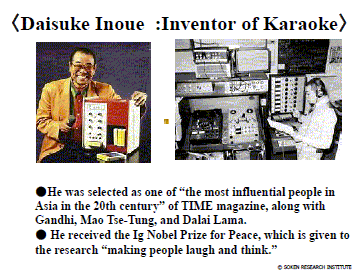
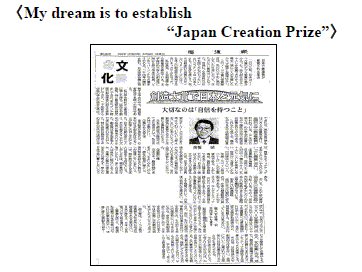
 Editor's Note (Toru Nakagawa, Nov. 15, 2013)
Editor's Note (Toru Nakagawa, Nov. 15, 2013)
I would like to make a comment on the overview of creativity methods presented by Dr. Takahashi in the present lecture (slide #44).
His overview is based on the valuable book he authored and edited:
"The Bible of Creativity", new revised edition, author & editor: Makoto Takahashi, published by Nikkagiren (JSCD), Dec. 2002, pp. 482.
The book was published in 2002 as a new edition after an entire revision of the preceding 1993 edition. 26 Experts of different methods in creativity joined to coauthor the book section by section. Thus it may represent the prevailing view on the creativity methods in Japan at that time, and also at present more or less.
Creativity methods are classified into four categories (just like in the slide 44 of the present lecture).
Divergent thinking techniques -- free association techniques, forcing association techniques, analogical thinking techniques
Convergent thinking techniques -- spatial convergent thinking techniques, flow-style convergent thinking techniques
Combined techniques -- (methods which use divergent and convergent thinking techniquess)
Attitudinal techniques -- mediation techniques, interaction techniques, drama techniques
88 techniques were described in the book. TRIZ was written by Dr. Yoshihisa Konishi in 4 pages and was categorized into the forcing association techniques.
The processes of divergent and convergent thinking (especially, divergent thinking and then convergent thinking) are certainly used very often and everywhere. However, such a categorization does not mention about what kind of information is sought for in the thinking. Thinking techniques categorized in such a manner can well handle with one-step processes only.
For solving (difficult) problems and achieving (difficult) tasks, it is necessary for us to recognize and visualize 'what kind of information we want to obtain/think of', I believe. The kind of information we finally want to obtain/create usually need multiple steps of processing information; in other words, we have to think step by step. Visualizing such multiple steps of information processing or thinking is necessary as the framework of the creativity methods (for problem solving and task achieving), I think.
Such a framework (i.e., basic paradigm) has been insufficient so far. The Four-box scheme of abstraction has been known in science and technology in general, but its actual usage seems not so different from analogical thinking.
In this situation, I have introduced the 'Six-box Scheme' as the new framework. It visualizes what kind of information should be sought/obtained step by step for problem solving and task achieving. Since there are abundant studies in the world, the framework can be fleshed out details as needed, with descriptions of various methods and specific examples.
This is "General methodology for creative problem solving and task achieving" (abbreviated as CrePS). For details please refer to the vision of CrePS  and the systematical documents of the CrePS methodology
and the systematical documents of the CrePS methodology .
.
I am discussing with a number of people including Dr. Takahashi in order to re-examine the overview of the creativity methods in accordance with the new framework.
Last updated on Nov. 18, 2013. Access point: Editor: nakagawa@ogu.ac.jp



























































